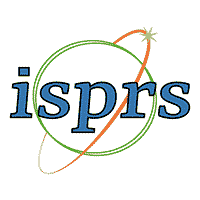Topic Editors


The Use of Big Data in Public Health Research and Practice
Topic Information
Dear Colleagues,
We are organizing a Topic on the use of big data to inform health research and practice. To enable decision-making, it is important to obtain timely data on the determinants of health and well-being. Big data can often be operational or “organic” data generated for non-research purposes, including social media, news feeds, Google Street View images, online reviews, blogs, electronic health records, pharmacy records, and billing records. This Topic is focused on innovative ways that big data are leveraged for health research and practice. Some possible submission ideas are listed below; however, submissions addressing other related topics are also welcomed:
- Use of electronic health records, billing data, and pharmacy data to understand individualized risk factors and treatment success;
- Characterization of built environments with big data derived from various sources (e.g., Street View images and remote sensing imagery data) as well as their impact on health;
- Using various user-generated content (e.g., GPS data, accelerometer data, users’ review data, social media data, and web search data) to study individual behaviors and social/cultural environments as well as their impacts on people’s health;
- Development of new methods or tools (e.g., natural language processing, machine learning, database management, high-performance computing, data mining, cloud computing, computer vision, visualization, geographic information systems, and spatial analysis) for big-data-based health research;
- Use of big data in COVID-19-related research;
- Application or development of causal inference methods for big data;
- Investigating and addressing data quality and uncertainty issues;
- Blending and integration of big data from different sources.
Dr. Quynh C. Nguyen
Dr. Thu T. Nguyen
Topic Editors
Keywords
- big data
- artificial intelligence
- machine learning
- deep learning
- data science
- natural language processing
- computer vision
- chat GPT
Participating Journals
| Journal Name | Impact Factor | CiteScore | Launched Year | First Decision (median) | APC | |
|---|---|---|---|---|---|---|

Cancers
|
4.5 | 8.0 | 2009 | 17.4 Days | CHF 2900 | Submit |

International Journal of Environmental Research and Public Health
|
- | 7.3 | 2004 | 25.8 Days | CHF 2500 | Submit |

ISPRS International Journal of Geo-Information
|
2.8 | 6.9 | 2012 | 35.8 Days | CHF 1900 | Submit |

Machine Learning and Knowledge Extraction
|
4.0 | 6.3 | 2019 | 20.8 Days | CHF 1800 | Submit |

Smart Cities
|
7.0 | 11.2 | 2018 | 28.4 Days | CHF 2000 | Submit |

MDPI Topics is cooperating with Preprints.org and has built a direct connection between MDPI journals and Preprints.org. Authors are encouraged to enjoy the benefits by posting a preprint at Preprints.org prior to publication:
- Immediately share your ideas ahead of publication and establish your research priority;
- Protect your idea from being stolen with this time-stamped preprint article;
- Enhance the exposure and impact of your research;
- Receive feedback from your peers in advance;
- Have it indexed in Web of Science (Preprint Citation Index), Google Scholar, Crossref, SHARE, PrePubMed, Scilit and Europe PMC.

